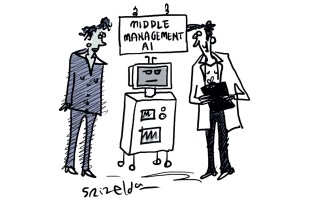It’s the whodunnit – or whatdunnit – that has kept scientists, politicians, journalists and armchair sleuths speculating ever since the first stories of a ‘mysterious viral pneumonia’ began leaking out of Wuhan: where did Sars-CoV-2, the virus that causes Covid-19, come from? Was it an unlucky natural occurrence, a bat virus which made the opportunistic leap from animals to humans somewhere in the pulsing zoonotic stew of a Wuhan wet market? Or did it stem from the accidental infection of a laboratory worker, most likely in the nearby Wuhan Institute of Virology (WIV), which by 2019 had collected nearly 20,000 bat samples, and more than 1,500 individual coronavirus sequences?
Many reputable scientists effectively sent out the message that the ‘lab leak’ theory was for crackpots
Both theories – and variations thereof – have their passionate backers. The truth of what happened sits in history, a stubborn little sequence of hard facts. But the difficulty lies in reaching those facts, buried as they may now be beneath hardened layers of undisclosed data, Chinese government obfuscation, opaque scientific methods and US political manoeuvrings. It requires an intrepid character to attempt excavations. Step forward John Sudworth, a former BBC China correspondent, and his podcast Fever: The Hunt for Covid’s Origin, also being broadcast on Radio 4.
Sudworth has form in irritating the Chinese authorities. In 2021 he had to leave for Taiwan after his reporting triggered a government backlash. Episode one of Fever recalls his investigative foray to the bat-caves of China’s southwestern Yunnan province, where researchers garnered material to tell them more about Sars-type coronaviruses. While in the region, Sudworth and his team were harried by every possible variety of state personnel, including the fire brigade (‘I’m not on fire!’ you hear him protesting). But as he probed the ‘lab leak’ hypothesis, noises from the West weren’t much more encouraging: western scientists said this was ‘chasing a conspiracy theory’.

As Covid spread, and ‘shock, fear and confusion’ hit China, Shi Zhengli, the director of the Centre for Emerging Infectious Diseases at the WIV, scolded people online to ‘shut their stinky mouths’ for speculating that her lab was the source of the virus. In the thick of an emerging pandemic, Shi – in her late fifties with a ‘warm smile’ and a ‘steely edge’ – no doubt had many reasons to lose her cool. But it’s clear Sudworth wondered: did she protest too much?
In Wuhan, Shi was known as ‘batwoman’for her passion for research into bat viruses, often collaborating with the biologist Linfa Wang – or ‘batman’ – who is interviewed here. We also hear from Peter Daszak, a British zoologist who worked with them both. The two men have fond memories of long Wuhan karaoke sessions with Shi. But then, with the Covid outbreak, ‘the music stopped’. A worried Shi combed through all her lab samples, Wang said, and found one that was a 96 per cent match with Sars-CoV-2 – but thankfully not the virus itself.
Was she giving colleagues the full picture? This is a story that features many unreliable or secretive narrators. As the podcast emphasises, the question of Covid’s origin was speedily politicised. An early scientific paper published in Nature magazine, ‘The Proximal Origin of Sars-CoV-2’ noted that the virus which causes Covid-19 had something highly unusual: a ‘furin cleavage site’, which boosted its ability to infect cells. But the phenomenon could occur naturally, it said, and in this case there was no known technique that could have created Sars-CoV-2 in a lab.
Many reputable scientists, including the US chief medical adviser Anthony Fauci, firmly backed this hypothesis, effectively sending out the message that the ‘lab leak’ theory was ‘for crackpots’. In sharp contrast, President Trump and erstwhile fellow travellers such as the right-wing strategist Steve Bannon were notably keen on the ‘lab leak’ idea. Its intellectual standing wasn’t helped by Trump’s tendency to jump to flashier accusations, such as that the virus was released ‘on purpose’, effectively suggesting China had deliberately unleashed a bio-weapon.
Still, fresh details kept contradicting the notion that sane people would quite obviously support one Covid origin story and crazy people another. Emails produced by FOI requests revealed that most of the scientists who wrote the ‘Proximal Origin’ paper initially took the ‘lab leak’ theory extremely seriously, as did Fauci himself. It also emerged that the Wuhan lab had received US government funding towards its research, via Daszak’s organisation EcoHealth Alliance, and under Fauci’s watch.
There were photographs of Chinese researchers collecting samples from the caves, without protective equipment and soaked in bat urine; concerns over possible ‘gain of function’ lab research, in which scientists manipulate viruses to supercharge their capabilities; and an intelligence report which said that several WIV employees became very sick as early as autumn 2019 – from seasonal flu, or something else? Robert Garry, one of the original authors of the ‘Proximal Origin’ paper, now says they went ‘a little too far’ in ruling out the ‘lab leak’ theory entirely. Meanwhile, Alina Chan, a biologist who openly regarded the ‘lab leak’ theory as viable, was vilified and ostracised.
Scientists and US intelligence agencies are still debating the truth among themselves, and I have five more episodes of Fever still to go. The potential shape of the truth keeps mutating, as more information emerges. Meanwhile, this gripping, admirably independent-minded podcast drives home a gloomy insight we forget at our peril: that despite the great benefits which science has delivered to mankind, its practitioners appear just as capable of tribalism, obstinacy, and recklessness as the rest of us.







Comments